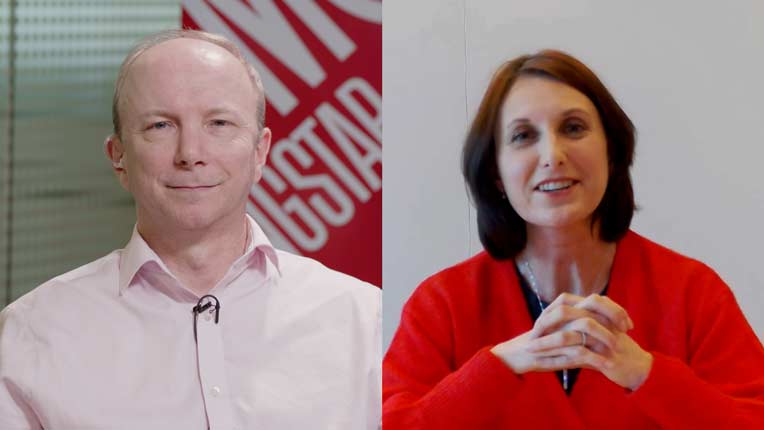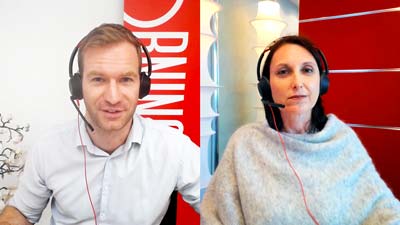Antje Schiffler: When choosing a bond fund for income portfolio investors may wonder should they choose a bond with the highest coupon, a high yield bonds. With me today to discuss this as a task is Jeana Doubell. She is analyst with Morningstar's Manager Research team. Jeana, great to have you here and tell us. Is this the good way for investors to go about things?
Jeana Doubell: Well, an ideal bond allocation within an income portfolio isn't all that dissimilar from a bond allocation in a regular well-balanced portfolio. The reason for this is because the most important function of bonds in any portfolio is to bring stability. They, in essence, lessen volatility as well that comes perhaps from a more volatile equity allocation in the same fund. However, higher bonds carry a higher credit risk than regular bonds, and therefore they are not necessarily able to bring the stability by themselves. So, while income investors might tilt their portfolio on the equity side to a higher dividend producing set of stocks. On the bond side, they often may maintain a higher allocation to impact investment grade bonds such as developed market government bonds or high-quality corporate credit. However, modest allocation to high yield bonds such as 10%, 15% can add a great deal of diversification to the fund and we see this as an added advantage.
Schiffler: So, what do investors need to be aware of when choosing a high bond fund?
Doubell: Well, I think it's best if they understand the risks. High yield bonds are essentially corporate credit bonds that carry a junk status rating. This means that there are increased risks when you're investing in high yield. For example, they may be issued by a company that already has a high debt load, or they could be a very subordinated bond deep within the capital structure, which means they offer less protection to investors if something goes wrong with the company.
In addition to that, high yield bonds are also more vulnerable to economic pressure than, let's say, investment grade bonds or other types of bonds. It's also much less liquid market because the high yield issuers do not necessarily issue as much public information or it's not as freely available as with other types of bonds, such as government bonds and because of this when the market is perhaps in a risk averse state it can be difficult to buy or sell those bonds and therefore we'd really encourage investors that are looking at the high yield to go in with a long-term mindset and to really stick with their investments through an entire investment cycle to achieve the best results.
Schiffler: So, you mentioned a lot of risks already. How can investors best manage these risks?
Doubell: Well, it is an inefficient market. A lot of the information as discussed, they struggle – it's not necessarily immediately represented in the pricing of the market. So, we really think in this space specifically, it helps to have an active manager because really good managers with decent or a large team of resources are really able to dive deep into these types of bonds and able to basically pick out those that perhaps have a higher chance of a default risk and able to maneuver around them selecting rather credits that are much less likely to default.
Schiffler: So, could you recommend any actively managed high yield bond strategies for an income portfolio?
Doubell: Sure. Perhaps we could consider the HSBC Euro High Yield Bond Fund. This fund is rated Gold by our Morningstar analysts and has been run by its veteran manager Philippe Igigabel for almost two decades. This is quite impressive as he started his career in high yield investing more or less at the same stage that high yield investing really came to market in the early 2000s. So, he has seen it all. He is also backed by a large team, 15 analysts and this is really needed for them to follow their very disciplined process, which focuses on company quality. Essentially, they look to identify those companies that have strong fundamentals and are very unlikely to default, which minimizes the risk of high yield investing. And this is actually evident in the fact that they have had no exposure to default since 2003. I think this is really testimony to how skillful management of credit risk can help a fund to outperform.
On the other hand, we have the Silver rated T.R Price European High Yield Bond Fund. This is managed by Michael Della Vedova. And has been led – which he has been leading since 2011. He also has over 25 years of experience. And while he's supported by what seems like a small team at first with three dedicated high yield analysts, he can also draw in the support of a global high yield team of 20 – making it to almost 20 analysts in total. The focus here is mainly on bottoming up securities selection with top-down factors playing less of a role. And the team basically look for discounted bonds that have lower quality – in the lower quality segments of the market. So, bonds rated B to CCC. Here the return profile can therefore be more volatile. They carry slightly more credit risk however, although they may lose more during a sell-off during market rallies bonds really help to outperform. So, while you perhaps require stronger stomach with T.R Price's high yield fund than with HSBC. The fund is definitely well-suited to outperform over the long-term.
Schiffler: So, some excellent recommendations for the European space. Anything you can highlight for the global spectrum?
Doubell: Sure. So, on the global side, we have the Gold rated Robeco High Yield Bond Fund. This is run by a duo team, Sander Bus and Roeland Moraal who've been managing the fund for over two decades as well. I think you might be sensing a theme with our top-rated managers. They really do know the space exceptionally well.
This team is supported by 23 global corporate analysts and the approach here centers around bottom-up security selection with top down management playing a role as well. They have a preference for companies with solid fundamentals, and this typically results in a higher average credit rating than some of their peers in the Global High Yield space. However, decent characteristics have also helped the fund perform better than their peers during periods of market volatility and has overall helped to increase the fund stability. This brings us back around to start of this conversation where I mentioned that bonds are typically added to a portfolio to increase its stability, and while high yield bonds may be slightly more volatile than the rest of their bond peers, they definitely have a place in the income portfolio.
Schiffler: Thank you so much for these recommendations, Jeana, and these insights. For Morningstar, I'm Antje Schiffler.




























